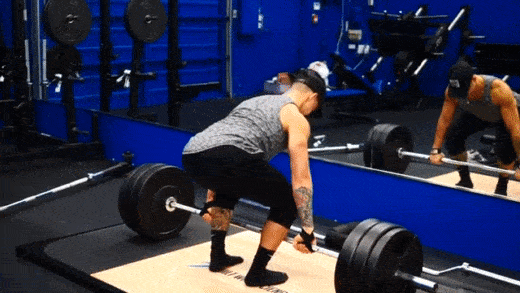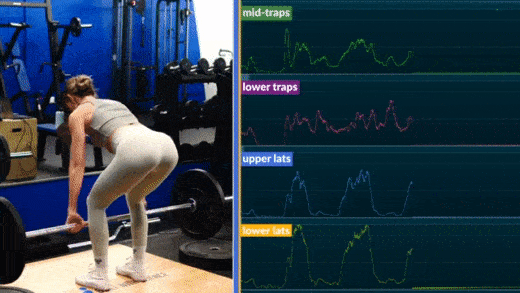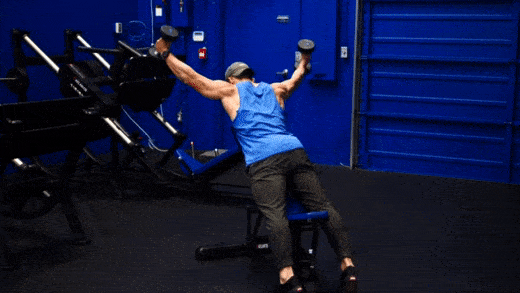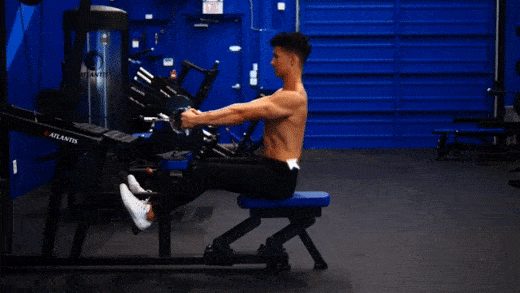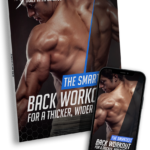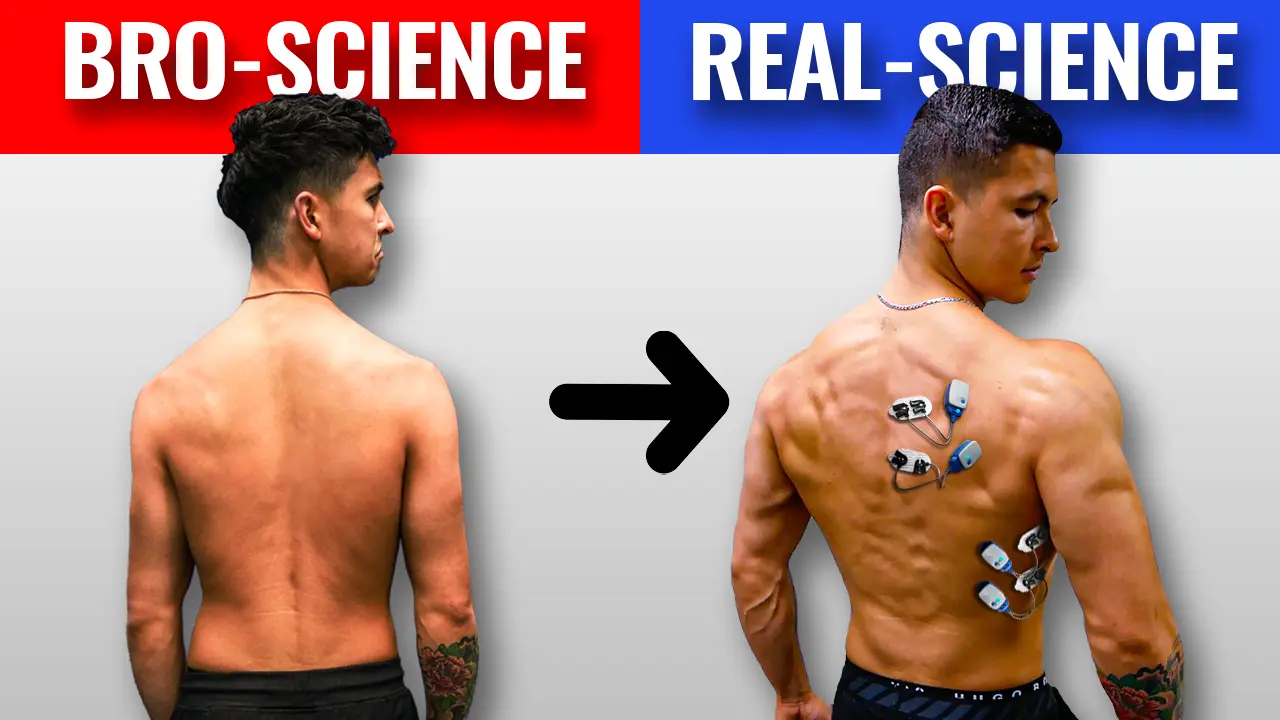
I Created The Smartest Back Workout For Growth (Using Science)
The back is such an important part of what makes an impressive physique. But with hundreds of different back exercises out there, it's hard to tell which you should do during your back workout. That's why we brought in Betty — our muscle activation measuring machine — for this article.
Today, we're using her to test the most popular back exercises with just bodyweight, dumbbells, barbells, and cables (all the works!) on 4 different people to find which exercises might be best for you to do during your back workout.
And, at the end of this article, we'll use the results to create the perfect back workout that you can trust will beat out all other back workouts — and get you the muscular, powerful looking back you're after.
Everything You Need To Know About Our Experiment
Before we get to testing the best exercises you should be doing in your back workout, let me first explain how we set up the experiment.
Sensor Placement
Note that the back isn't just one muscle. And different back workouts with different back exercises will target different back muscles.
The slight problem, however, is that Betty (the muscle activation machine I mentioned earlier) only has 4 sensors. So, we had to figure out which back muscles were worth putting sensors on to measure in the first place.
After talking with a few of our researchers and coaches, here's what we decided. The two main features most people want out of their back workouts are thickness and width — the 2 hallmarks of a well-developed back:
- Thickness: Most back thickness comes from the mid and upper back muscles. To represent this area, we put a sensor on the mid-traps. But we also put a sensor on an extremely important muscle right below the mid-traps, the lower traps. You'll learn why we did this later on.
- Width: The main muscle responsible for widening your back is your lats. This is the largest muscle of the upper body. And because it's so large, we actually put 2 sensors on it. One on the upper lats, and one on the lower lats.
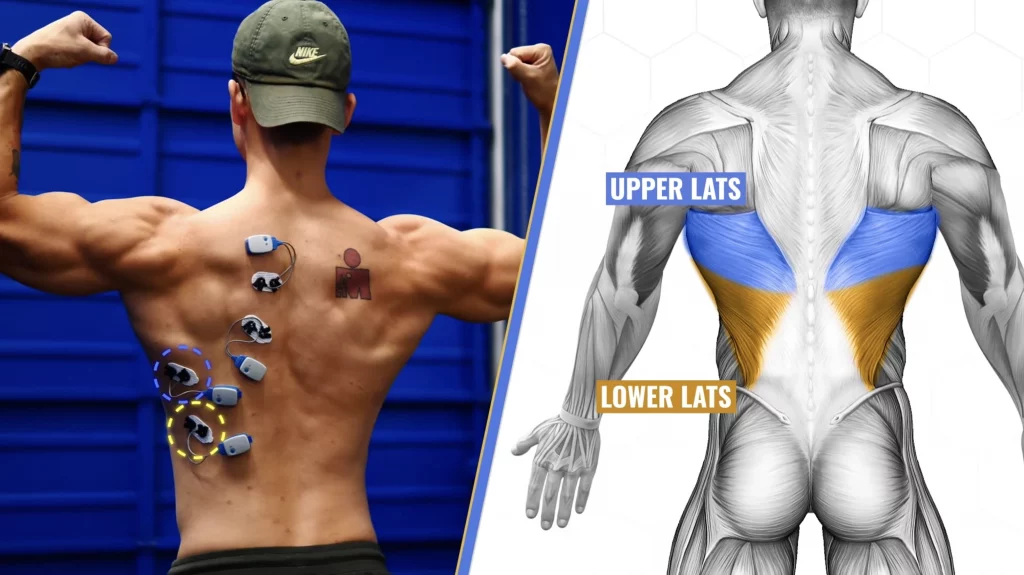
After testing, we'll see which exercises come out on top for these 2 areas. But I'll also run an extra analysis that determines what exercises might be best as "overall back" builders in your back workout as well.
Subjects
Next, subjects. If you haven't checked out our past EMG articles, I highly encourage you to do so after this for complete upper body development:
- Which Are The Best Shoulder Exercises? I Tested 17 To Find Out
- The Best Chest Exercises: A $12,000 Machine Reveals What They Are
So, anyway, in those, we used 3 subjects. That would be coach Alex and me, the more experienced lifters, and Raza, our operations manager, who, although is learning quite a bit throughout this series, is still a beginner.
This time, although it would add even more work, I wanted a female subject as well because they tend to be underrepresented in fitness research.
And, the more subjects, the more reliable the data.
So we recruited Tahnee, the love of my life, who was out last experiment because of a shoulder injury. Luckily, she was open to it, helping us provide proof that these weren't only the best exercises to do during back workouts for men only.
It’ll be interesting to see how the results compare between the different types of subjects.
Wager
As for the wager? Well, after last week and the damage it caused, we decided to take a break to give everyone a well-deserved rest. Plus, it costs too much to send Raza to trauma counselling.
Controlling Variables
After recruiting, it was time to prep the experiment that'll show us the best exercises to do during back workouts. We had to control 3 variables: weight used, sensor placement, and maximum voluntary contraction (MVC) readings.
#1: Weight Testing
First, the more challenging an exercise is, the more muscle fibers you'll use, and the higher activation Betty will read.
To try to control for this, a few days before testing the best exercises to do during back workouts, we all spent a whole day in our gym to figure out how much weight we'd use on each exercise to make them equally challenging.
The goal was to find the ideal weight that if we did 5 reps with, we'd only be able to do 3 more before we reached complete failure.
One absolutely devastating thing that happened during this session was my wrist straps breaking.
I'm not going to lie, this hit me hard. I've lifted with these wrist straps for years, since the beginning of my journey. And no matter how close they were to breaking, they never let me down. I may have been smiling here, but on the inside, I was crying.
But I'm taking it as a sign that I've reached new limits — and am ready to move on from the old. R.I.P. Buddy, you are going to heaven to be used by Zyzz and many other Gym Gods.
Sidenote: it was also cool to see Raza, under the guidance of our Built With Science coach Alex, overcoming his fear of big, daunting movements, as I know how intimidating they can be for beginners who haven't ever used them in their back workouts before (or any other types of workouts, really).
#2: Shave (For Sensor Placement)
Next, sensor placement. As some of you may know from our previous experiments, we need smooth, hairless skin so the sensors stick and can read well.
Usually, Raza is the only one who needs a good waxing, but to my disappointment, there was only a small patch of hair on his lats that needed removing.
But guess what we're testing next after we're done with finding out the best exercises you should do during your back workout? Uh-huh. Glutes. And my sources tell me that's where his body chose to pile on the hair.
With that out of the way, next, we checked if Betty was working.
#3: Maximum Voluntary Contraction (MVC)
Finally, before testing, there's one last variable we had to control.
Some people may be able to activate their back better than others. Even if they do the same back exercises and the same back workout.
This is why we need a measurement known as MVC or maximum voluntary contraction.
Basically, for each subject, we need to figure out the maximum activation our back muscles can reach during our back workouts. By gathering this before we start testing, we're able to then accurately compare the exercises we do against each of our own maximum values to see how well they work for our individual back muscles.
For our chest experiment, we used an ultra-heavy bench press. But for our back, well, we had to get a little creative.
With all of that done, we’re ready to test.
Experimental Design
We're sticking to a similar design as our past experiments. That means we'll do 1 set of 5 reps, then take at least a 5-minute rest before moving on to the next exercise. We also rotated between horizontal and vertical pulling exercises to avoid overly fatiguing the same muscles.
So, Which Are The Best Exercises You Should Do In Your Back Workout?
Before we dive into the winners (i.e., the thickness- and width-giving exercises to do in your back workouts), keep in mind that Betty — and EMG research in general — has its limitations.
There are many instances where more activation does not lead to more growth. Plus, there are many other variables to consider when trying to determine how well an exercise is at building muscle. This is especially true for the back, where you have to be extra careful about correlating activation with growth.
That said, after averaging the data across the 4 of us, I did find some very interesting insights that align with other research out there.
Psst: we don't just include the best back exercises in our Built With Science programs. You'll also find the best shoulders, chest, hamstrings, quads ... you-name-it-we've-got-it exercises. Interested in "hacking" your way to your ideal physique? Then take the quick analysis quiz below to discover the best program for you and your body:
Click the button below to take my analysis quiz to discover the best program for you:
↓
The Best Overall Back Builders
Let’s first talk about “overall back builders” to include in your back workout.
These are exercises that consistently, across all 4 subjects, showed very high activation in all the muscles we measured. There are two that came out on top.
The first came as a bit of a surprise to me. In fact, most of you guys voted this exercise to come in almost dead last for the various muscles we tested.
#1: Deadlifts
What is it? Deadlifts.
Now, I always knew these worked the back to an extent, but I wasn’t expecting to see such high activation in every single muscle.
But it makes sense. Your legs are mostly responsible for moving the weight, but all of your upper and lower back muscles have to work hard to keep your body stable as you lift.
Although they aren’t taken through their full range of motion and are only contracting isometrically, this is still a powerful stimulus for growth, especially because of the heavy weight used and the deep stretch that some of these back muscles experience.
And, even though Alex and I used relatively heavier weights during our measurements, Tahnee used much lighter weights and an elevated platform and still experienced very high activation across the board. The same was true for Raza, who was still just learning how to do them properly.
#2: Bent-Over Rows
The second exercise is a classic. Bent-over rows.
Similar to deadlifts, you’re able to load it relatively heavy, and your whole back, including the lower back, is helping you stabilize and move the weight.
Now we tested this exercise with an overhand versus underhand grip.
The overhand grip led to more mid-back activation, whereas the underhand grip, likely because the elbows could remain tucked close to the sides, led to slightly more lats activation, primarily in the lower lats. This is good to know, depending on what area you want to focus on the most during your back workouts.
What To Note About Including These Exercises In Your Back Workout
Deadlifts and bent-over-rows are fantastic overall back builders to include in your back workouts. T-bar rows are, too. These three are all efficient movements that'll work a lot of your back muscles at once. That said, they do come with a cost.
They're very fatiguing and demand a lot from your lower back muscles (which is why they're considered the best lower back exercises), especially as you get more experienced and can lift heavier weights.
They also don't work certain back muscles as well as other exercises do. That's where some of the next exercises we measured come in handy.
The Best Upper And Mid Back (Mid-Traps) Exercises
Now, let's talk about the best exercises you should include in your back workouts for the mid and upper back.
Only 5% of you successfully guessed the exercise that came out on top: the inverted row. But when I took a deeper look into the individual data, I noticed something interesting. It led to the highest back activation for both Tahnee and Raza but didn’t do nearly as well for both myself and Alex, even after adjusting the setup to make it more difficult.
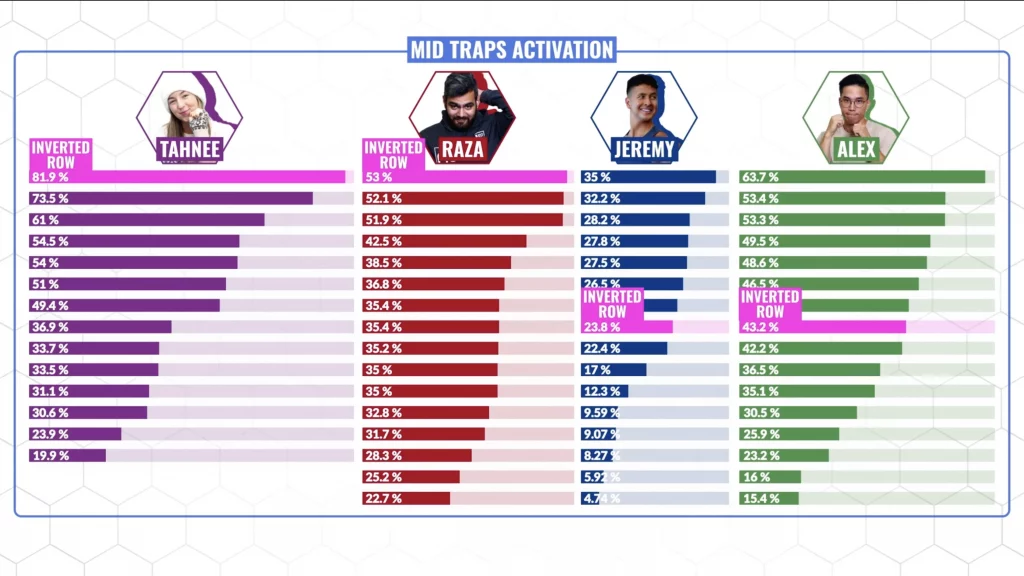
So while it is a great bodyweight exercise to include in your back workout that I’d highly recommend for most females and beginners, as you get more experienced, you’ll want to consider other movements that you can start adding weight to or save this exercise for the tail end of your workout when your back is already quite fatigued.
As for the other exercises that came out on top, generally, research suggests that rows, where the elbows can be kept angled out wide, are best at targeting the mid and upper back.
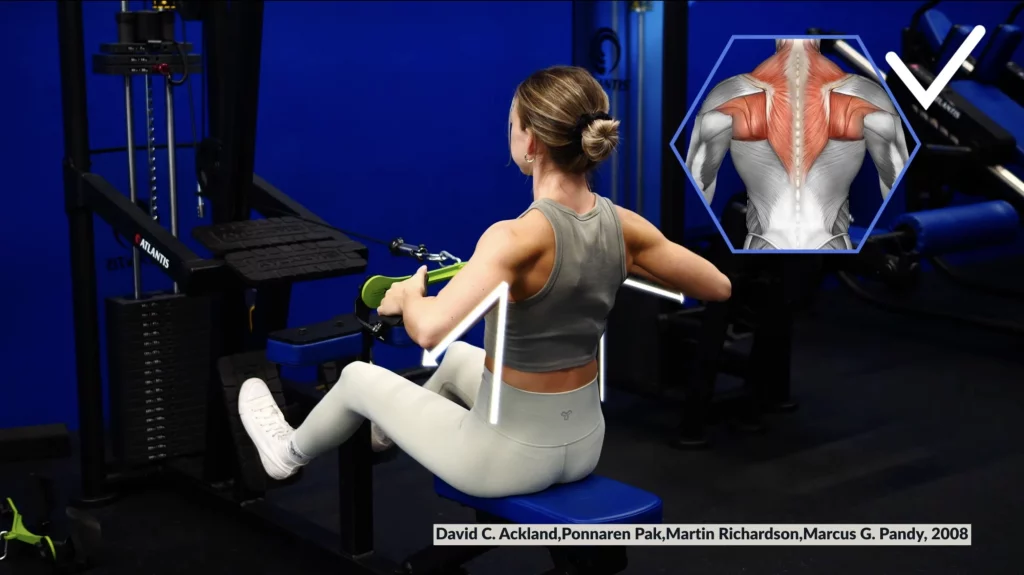
I was impressed to see most of you guys predicted the same based on your voting. But what did we actually find? Well, wide grip seated cable rows and dumbbell chest supported rows with the elbows flared out and shoulder blades squeezed together at the end both led to the highest activation after the inverted row.
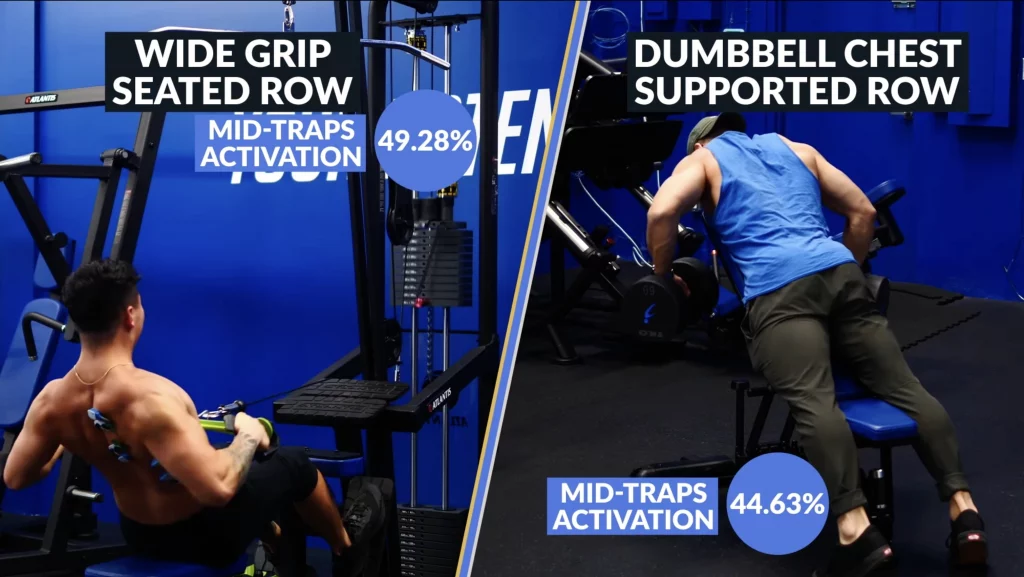
And although we didn’t test a chest-supported machine row, I’d expect to see the same thing as long as you use a relatively wider grip and keep your elbows angled out.
Y-Raises And Your Lower Traps
Before we dive into the best lats-focused exercises to include in your back workouts, I want to talk about the lower traps.
Although not on anybody's list of "top 5 sexiest muscles", it's still an extremely important yet overlooked muscle for overall shoulder health and posture. In fact, it's so important that I'd recommend including at least one exercise in your back workouts that really focuses on this muscle.
And that one that came out on top during our experiment doesn't even require any weight: incline-prone Y raises. After we go through the lats, I'll explain how exactly I'd go about adding this to your back workouts.
The Best Lats Exercises
Last but not least, the best exercises for your lats to include in your back workouts.
Generally, vertical pulling movements are best to hit this region. So it’s no surprise all you muscle nerds voted for lat pulldowns and pull-ups to come out on top. But while these exercises do a pretty good job of activating the lats, one move, in particular, however, led to higher activation than any of those exercises. The lat-focused row.
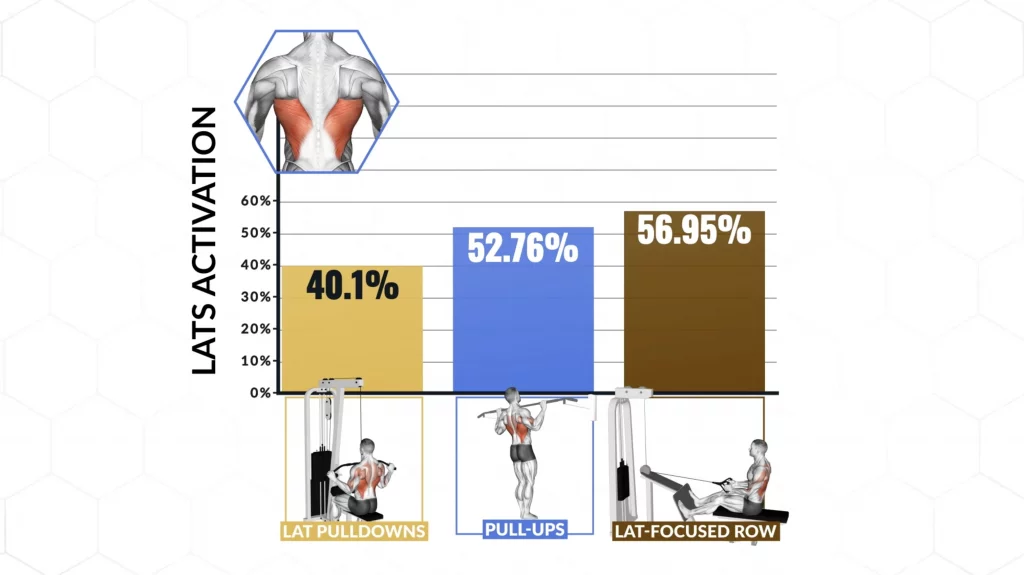
This is something I first got from Coach Kassem of N1 training. Although it looks like a row, it’s very similar to a pulldown because of the way you position your body.
By leaning forward slightly and keeping the elbows tucked close to the sides, it puts the lats in a better position. With proper coaching, this exercise did very well, even for Tahnee and Raza, who had never tried this move before. So it’s a great move to include in your back workouts, regardless of your experience, to put a little more focus on the lats.
Putting It All Together (Sample Back Workout)
Now, let’s put everything we learned into a back workout that you can start using right away.
I’d recommend picking one exercise from each of the categories we went through and then adding in prone Y raises to the end of your back workout to give the lower traps some extra love.
Overall Back Builders
- Deadlifts
- Bent-Over Barbell Rows (Overhand = more mid/upper back, underhand = more lats)
Lats Focused
- Lat-Focused Row
- Pull-Ups
- Lat Pulldowns
- Chin-Ups
Mid/Upper Back Focused
- Inverted row (for beginners and most females)
- Cable Row (elbows angled out)
- Dumbbell Chest Supported Row (elbows angled out)
- Wide Grip Chest Supported Machine Rows (elbows angled out)
Sample Back Workout
Bent-Over Barbell Row
Pull-Ups
Dumbbell Chest Supported Row (elbows angled out)
Incline Prone Y-Raises
I’ve also created a completely free downloadable workout PDF that puts this all together for you, complete with sets, reps, and instructions for each exercise. You can download it below:
Click the button below to download the FREE back workout PDF:
↓
You'll See The Most Gains From Sticking To The Basics
Honestly, after testing the chest, shoulders, and now back, it's helped me realize that training doesn't have to be crazy complicated.
The best exercises tend to be the most basic.
Yet, these basic exercises have stood the test of time for a reason and helped build many incredibly impressive physiques over the years. So, rather than trying to always seek the next best exercise to include in your back workout (or any other workouts), I urge you to:
- Stick to the basics AND
- Focus on consistency, proper form, and training hard
... As that's truly where most of your gains will be made.
Once again, if you haven't checked out our past EMG articles, I highly encourage you to do so after this for complete upper body development:
- Which Are The Best Shoulder Exercises? I Tested 17 To Find Out
- The Best Chest Exercises: A $12,000 Machine Reveals What They Are
And for a step-by-step science-based program that takes care of all the guesswork for you and shows you how to train and how to eat week after week to help you build the body you deserve, just take our analysis quiz to find the best program for you and your body:
Click the button below to take my analysis quiz to discover the best program for you:
↓






